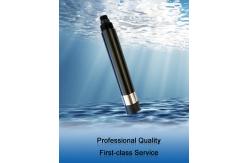RS485 Interface Dissolved Oxygen Sensor Anti Interference KFDO601
|
|
KFDO601 Online Fluorescence Dissolved Oxygen No Electrolyte Is Required And Will Not Be Polarized No Oxygen Consumption
1.Operational Principle KFDO601 integrated on-line fluorescence dissolved oxygen sensor is designed and fabricated based on the quenching principle of excited fluorescence by specific substances in physics. When the excitation light is shone on the fluorescent material on the surface of the fluorescent film head, the fluorescent material is excited and emits fluorescence. The quenching time of fluorescence is affected by the concentration of oxygen molecules on the surface of the fluorescent film head.By detecting the phase difference between fluorescence and excitation light and comparing with the internal calibration curve, the concentration of oxygen molecules can be calculated, and the final value can be output after temperature and salinity compensation.
2.Feature
3.Technical Specifications
4.Dimensional DrawingNote:The sensor connector is m16-5 core waterproof connector male. 5.Installation and Electrical Connection5.1 Install
The sensor shall be installed fixedly below the liquid level. The installation and use shall avoid collision or scraping against the surface of the fluorescent film head. The fluorescent film head part shall avoid being attached by the bottom sediment.Remove the rubber cover when use. 5.2 Electrical connection
Check wiring sequence carefully before power on to avoid unnecessary losses caused by wiring errors. Wiring instructions: Considering that the cables have been immersed in water (including seawater) or exposed to air for a long time, all wiring positions are required to be waterproof, and the cables should have certain corrosion resistance. 6.Maintenance6.1 Maintenance Schedule and Methodology6.1.1 Maintenance Schedule Different from the dissolved oxygen probe technology of electrochemical principle, the fluorescence dissolved oxygen probe does not consume oxygen and does not need to be cleaned frequently (except when it is used in viscous liquid).
Note: The maintenance frequency in the above table is only recommended, and the maintenance personnel shall clean the sensor according to the actual use of the sensor; however, the replacement frequency of the fluorescent cap is recommended once a year. 6.1.2 Maintenance Method a) Sensor outer surface: clean the outer surface of the sensor with tap water, if there is still debris residue, wipe with wet soft cloth, for some stubborn dirt, you can add some household washing liquid to tap water to clean. b) Surface of fluorescent film head: If there is dirt on the surface of fluorescent film head, please rinse with clean water or wipe gently with a soft cloth.Pay attention to the intensity of cleaning to avoid causing scratches in the measuring area and affecting the measurement accuracy. c) Inside the fluorescent film head: it is generally unnecessary to clean. If water vapor or dust enters into the fluorescent film head, the cleaning steps are as follows:
d) Check the cables of the sensor: there should be no damage to the skin and root of the cables;Terminals should not be submerged in water;When the sensor is normally installed, the cable should not be tensioned, otherwise the internal wire of the cable will easily break and the sensor cannot work normally. e) Check whether the casing of the sensor is damaged by corrosion or other causes. f) Daily storage of fluorescent film head: When not in use, a rubber protective cover with a wet sponge should be covered to keep the surface of the measuring area of fluorescent film head wet.If the surface of the measuring area of the sensor fluorescent film head is chronically dry, measurement error or data instability will occur, and it shall be soaked in water for 48 hours before use.
6.2 Frequently Questions
6.3 Calibration of Sensorsa) Zero Calibration Weighing 5 g of sodium sulfite by a balance, adding 95mL of water into a 250-mL measuring cylinder, pouring the water into a beaker, adding the sodium sulfite which has been weighed, stirring with a glass rod, dissolving, and obtaining a solution of 5% sodium sulfite, putting the sensor in a solution, And the zero point calibration is carried out after the three-minute numerical stability is stable. Refer to the Appendix to the instructions b) Slope Calibration The sensor probe is placed in air saturated water and the slope is calibrated after 3 minutes of numerical stability. The instructions refer to the appendix. c) Preparation of Air Saturated Water: add 2% 3 volume fresh distilled water to the constant temperature water bath to float the porous plastic sheet on the water surface (see figure below). At the same time, the bubbler (air pump) is used to aerate the water continuously for more than 1 hour, stop aeration, and get air saturated water after 20 minutes or so. Put the sensor into the water and calibrate the slope after the numerical value is stable.
Note: as an option, slope calibration can also be performed in water-saturated air. Put the sensor in a calibration bottle with a small amount of water (the probe is higher than the water surface 2-3mm) to ensure that the sensor film cap remains wet but has no water droplets, and the calibration slope is calibrated after 3 minutes of numerical stability. 6.4 Points for Attention
7. Quality and Service7.1 Quality Assurance
7.2 Spare Parts and Spare PartsThis product includes:
7.3 After-sales Service CommitmentThe company provides after-sales service for this machine within one year from the date of sale, but does not include the damage caused by improper use. If you need to repair or adjust, please send it back, but the freight must be borne by yourself, and it is necessary to make sure that the packing is good to avoid damage in transit. We will repair the damage of the instrument free of charge.
Contact UsWebsite www.kacise.com
|
|||||||||||||||||||||||||||||||||||||||||||||||||||||||||||||||
| Product Tags: Rs-485 interface dissolved oxygen sensor anti interference dissolved oxygen sensor 20mg/L optical dissolved oxygen sensor |
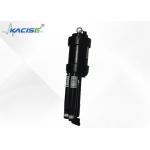
|
KWS-850 On-line Multi-parameter Water Sensor High Accuracy Turbidity Measurement For Wastewater Treatment Plants |
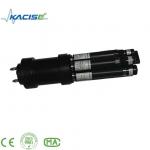
|
Power Consumption 5W 12V KWS-850 Multi-Parameter Water Quality Sensor For Water Monitoring |
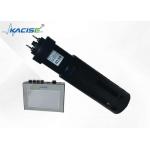
|
Low Maintenance Of The KWS-850 On-line Multi-parameter Water Quality Sensor |
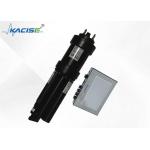
|
Precision KWS-850 On-line Water Turbidity Sensor Water Quality Sensor For Aquaculture |
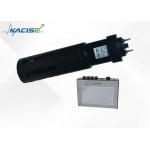
|
The KWS-850 On-line Multi-parameter Water Quality Sensor Can Measure 8 Parameters Simultaneously |
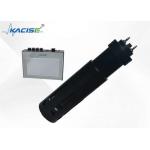
|
The Integrated KWS-850 On-line Multi-parameter Self-cleaning Digital Digital Sensor |

